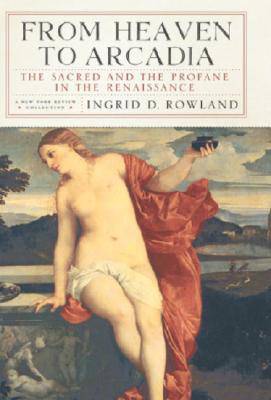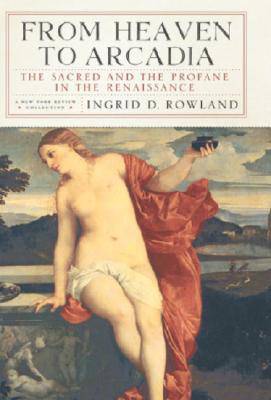
- Retrait gratuit dans votre magasin Club
- 7.000.000 titres dans notre catalogue
- Payer en toute sécurité
- Toujours un magasin près de chez vous
- Retrait gratuit dans votre magasin Club
- 7.000.0000 titres dans notre catalogue
- Payer en toute sécurité
- Toujours un magasin près de chez vous
22,45 €
+ 44 points
Description
From the revelations of classical statuary pulled from the Roman soil as the popes began rebuilding the city in the fifteenth century, to the myth of serenity that Venice constructed to conceal its physical and political fragility, to bloody yet cultured Florence under the Medici, Ingrid D. Rowland traces the worldly, unworldly, and otherworldly strivings of artists, writers, popes, and politicians during that great "outburst of mental energy" we know as the Renaissance.Here are Botticelli, whose illustrations for the Divine Comedy reveal him to be one of Dante's most careful readers; the multifaceted genius of Leonardo; the astonishing mastery of Titian and the erratic brilliance of artists like Correggio, Caravaggio, and Artemisia Gentileschi; the enigmatic erotic novel Hypnerotomachia Poliphili, the decoding of which was the subject of the recent novel The Rule of Four; the Western fascination with the mysteries of Egypt; and the glittering spiritual ferment of late Byzantium, which as it collapsed passed on so many ideas to Renaissance Italy.But beyond its artistic accomplishments, Rowland writes, "Renaissance life at its most distinctive was the intangible, unworldly life of the mind." In her pages astronomers and astrologists, poets and philosophers, pornographers and prostitutes jostle for attention with painters and sculptors. Among them the inquisitive Jesuit scholar Athanasius Kircher stands out as a polymath who ranged over nearly every field of knowledge. Even though his commingling of scientific observation and hermetic symbolism is now obsolete, he remains for Rowland "a builder of connections who insisted on seeing harmony in the midst of disorder"-and thus one of the most exemplary Renaissance figures of all.
Spécifications
Parties prenantes
- Auteur(s) :
- Editeur:
Contenu
- Nombre de pages :
- 294
- Langue:
- Anglais
- Collection :
Caractéristiques
- EAN:
- 9781590172957
- Date de parution :
- 01-10-08
- Format:
- Livre broché
- Format numérique:
- Trade paperback (VS)
- Dimensions :
- 137 mm x 206 mm
- Poids :
- 408 g

Les avis
Nous publions uniquement les avis qui respectent les conditions requises. Consultez nos conditions pour les avis.






